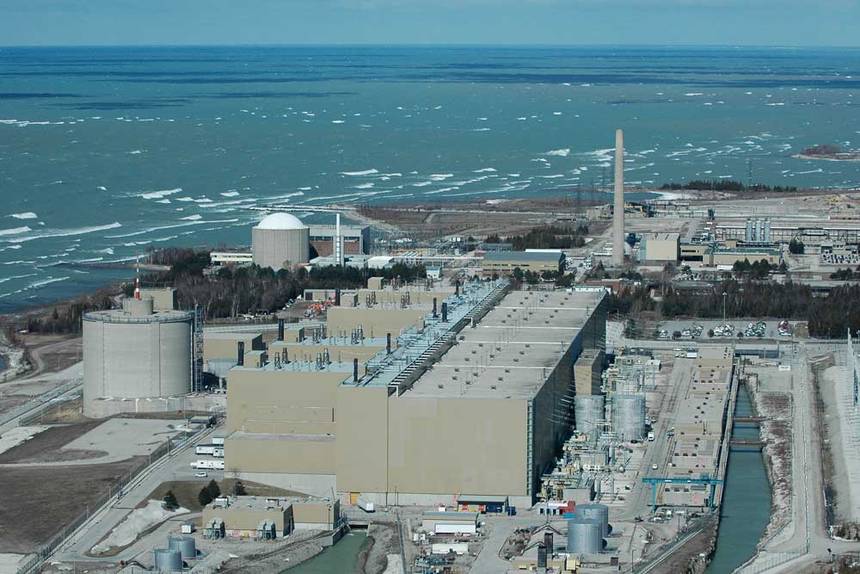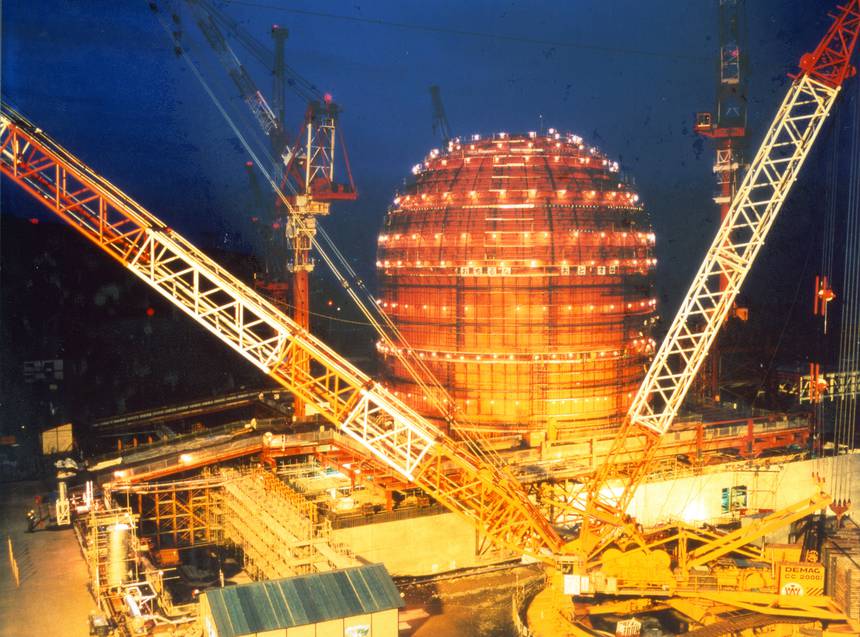Instead of building giant concrete buildings filled with uranium, why not build smaller efficient buildings filled with people.
Nuclear power remains one of the most controversial and difficult issues for environmentalists. There are many reasons to want it to go away, from radiation to waste to danger from Fukushima-like disasters, but it has one over-arching virtue that seems more important all the time: it can produce vast amounts of power without carbon emissions from generation. That’s why people like George Monbiot say “I don’t understand why the nuclear question needs to divide the environment movement. Our underlying aim is the same: we all want to reduce human impacts on the biosphere.”
Now Marc Gunther, who has been writing about environmental issues for years, puts his oar into these dangerous waters with a new article Nuclear power: A dilemma for climate change philanthropy. He’s worried about the organizations that are anti-nuke, like the Sierra Club and Greenpeace and the philanthropists who support them. He quotes a book by Joshua S. Goldstein and Staffan A. Qvist, who argue that “the only way to rapidly decarbonize the world’s energy systems is with a rapid rollout of nuclear power and renewable energy.”
Up until now, only one carbon-free energy source has proven able to scale up very quickly and — in the right conditions — affordably. That source is nuclear power.
Gunther notes that countries like Sweden and France, with big investments in nuclear power, have far lower emissions and the cheapest electricity in Europe. He also mentions the Province of Ontario, which has reduced CO2 emissions by 90 percent and eliminated coal.
This is why I believe that quote of the authors is misguided and wrong. I happen to live in that Province of Ontario, which has the most expensive electricity in Canada. (Although they are still less than what Americans pay in San Francisco, New York or even Detroit). Many here blame the last Liberal government for investing in renewables, but a big part of the problem is the huge “stranded debt” left over from building the nuclear plants in the first place, which we pay off with every bill.
Nuclear is expensive to build.
Nuclear power plants are hugely expensive to build and maintain; the Hinkley Point C plant in the UK is estimated to cost over 20 billion pounds. In Ontario, the Bruce Power plant is being refurbished right now with a cost of C$13 billion. Fixing Ontario’s Darlington nuclear plants will cost C$12.8 billion. This is clean power, but it ain’t what you would call affordable.
Nuclear is slow.
And then there is the question of scaling it up quickly. Reactors take a long time to build; the record is one in Argentina that took 33 years. According to Energy Matters that is an aberration.
At the other end of the scale, 18 reactors were completed in 3 years! 12 of those in Japan, 3 in the USA, 2 in Russia and 1 in Switzerland. These are a mixture of boiling water and pressurised water reactors. Clearly, it does not need to take forever to build new reactors given good supply chain, expertise and engineering protocols. The mean construction time of 441 reactors in use today was 7.5 years.
But that doesn’t include the design and approval time, which might double it. Many blame the costs and time delays on regulation and over-design (who needs that big containment dome!) but good luck building a reactor today without one. There could be economies; Gunther quotes the author:
“Somebody’s got to innovate,” Goldstein says. “The goal is to make these less like building a complicated bridge and more like stamping Boeing jetliners as they come off an assembly line.”
Nuclear is complicated.
But it is more like a bridge than a plane. It is the same argument I use when people liken building prefab housing to building cars; planes can be the same everywhere in the world. A nuclear plant is going to need different foundations, different water supplies, has different neighbours and different earthquake zones. It is hard to make them all the same. Fundamentally, they are not, and the reactor is only a portion of the cost; the rest is just a big dumb building, with few economies of scale.

